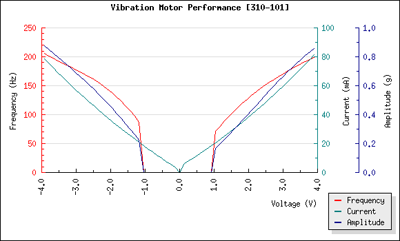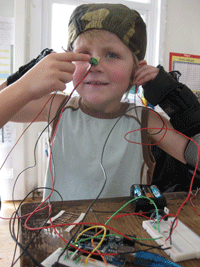Prototype 2: PWM controlled Vibration Motors
We attached a 10mm shaftless DC motor, commonly used in mobile phone, to perf board, along with a snubber diode to protect the microcontroller. These had one con- nection to a 3.8V power supply and another to a transistor which was driven by an Arduino microcontroller pulse width modulatation (PWM) channel. By varying the PWM signal it was possible to control the intensity of activation, although frequency and amplitude cannot be separately adjusted.

Graph showing how frequency (Hz) and amplitude (g) of a 10mm vibration motor vary with voltage. Graph from Precision Microdrives.
We attached these motors to various body areas (head, abdomen, back and arms) using tape or simply holding them in place by hand. We found that although there was variation in sensitivity, subjects (various lab members and their family members) were able to discriminate three to five intensities (essentially, low, medium and high).

